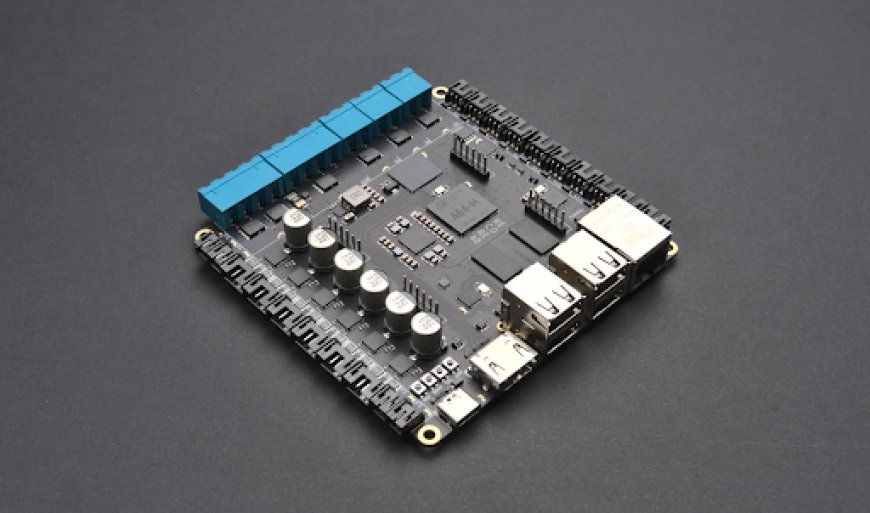Exploring the Differences Between Open-Source and Closed-Source 3D Printer Controller Boards
Let’s dive into the world of 3D printer controller boards and explore the nuances between open-source and closed-source options.

When it comes to 3D printing, the controller board is a critical component of your setup. It acts as the brain of the printer, managing the operation of motors, sensors, and heating elements, and converting G-code into precise movements. Among the various choices available, one of the key decisions you'll have to make is whether to opt for an open-source or closed-source 3D printer controller board. Both types have distinct advantages and drawbacks, and understanding these differences is essential for choosing the right one for your needs. Let’s dive into the world of 3D printer controller boards and explore the nuances between open-source and closed-source options.
Open-Source 3D Printer Controller Boards
Open-source 3D printer boards are those whose designs, firmware, and source code are freely available to the public. This allows users to modify and customize the board's software and hardware to suit their specific needs. One of the most popular open-source controller boards is the RAMPS (RepRap Arduino Mega Pololu Shield), often paired with the Arduino platform. The flexibility of open-source boards allows users to experiment with different settings, update firmware, and add custom features without restrictions.
Advantages of Open-Source 3D Printer Controller Boards:
-
Customization and Flexibility: With access to the source code, you can tweak the firmware to optimize the board for your specific use case. Whether you're aiming for increased print quality, speed, or specialized functionality, open-source boards offer the freedom to make those changes.
-
Community Support: Open-source boards often have a large and active community. Users share modifications, bug fixes, and performance tweaks, making it easier to find solutions to any problems you encounter. If you buy a 3D printer control board that’s open-source, you can tap into a wealth of knowledge from other makers and engineers.
-
Cost-Effective: Generally, open-source boards are more affordable compared to their closed-source counterparts. Because the hardware and firmware are freely available, you can often find open-source controller boards at lower prices, which is especially beneficial for hobbyists or those on a budget.
-
Compatibility: Many open-source 3D printer controller boards are designed to be compatible with a wide range of 3D printers and accessories. This allows you to expand or upgrade your system without worrying about vendor lock-in.
Closed-Source 3D Printer Controller Boards
On the other hand, closed-source 3D printer controller boards come with proprietary firmware and hardware that are typically locked by the manufacturer. Users cannot modify or access the source code, and updates are released exclusively by the manufacturer. Many commercial 3D printers come with closed-source boards, such as the Duet series, which are known for their advanced features and reliability.
Advantages of Closed-Source 3D Printer Controller Boards:
-
User-Friendly: If you're looking to buy 3D printer control boards that are easy to use, try Closed-source boards, as they are generally easier to use, especially for beginners. They come with pre-configured settings and require minimal customization. Many closed-source boards also feature graphical interfaces or touchscreens that simplify the setup process.
-
Reliability and Performance: Manufacturers of closed-source boards often provide rigorous quality control, leading to a high degree of reliability. These boards are specifically optimized for the hardware they support, resulting in a more polished user experience and smoother printing processes.
-
Official Support: Unlike open-source boards, closed-source options come with dedicated customer support, which can be a huge advantage if you run into issues with your 3D printer. Additionally, updates are regularly provided, ensuring the system is kept up-to-date and bug-free.
-
Integration with Other Hardware: Closed-source boards are often optimized to work seamlessly with proprietary 3D printers, sensors, and accessories. This can reduce compatibility issues and streamline the overall printing experience.
Conclusion
The choice between open-source and closed-source 3D printer boards largely depends on your needs and expertise. If you're a hobbyist, DIY enthusiast, or someone who enjoys tinkering and customizing your setup, an open-source controller board might be the best fit. It offers flexibility, affordability, and a robust community to help with troubleshooting. On the other hand, if you’re looking for a reliable, user-friendly, and hassle-free experience, a closed-source board might be more suitable, especially for commercial or professional use. No matter what type you choose, always ensure you’re buying high-quality products. If you're looking to buy 3D printer control boards or explore the latest 3D printing technologies, check out 3D Printing USA for top-notch options that suit your needs.
What's Your Reaction?


























